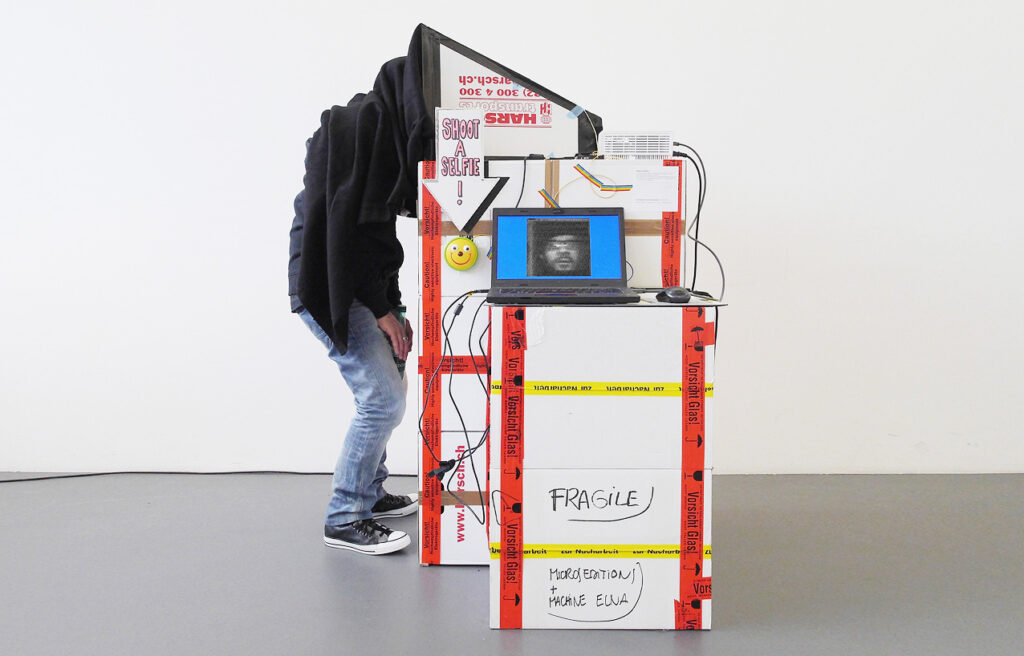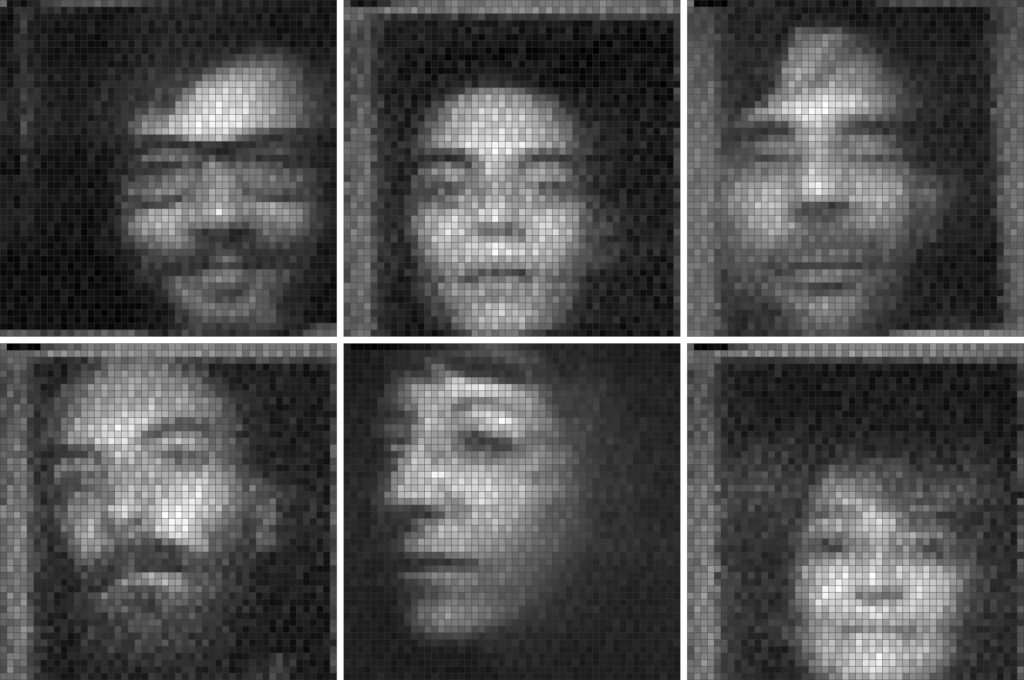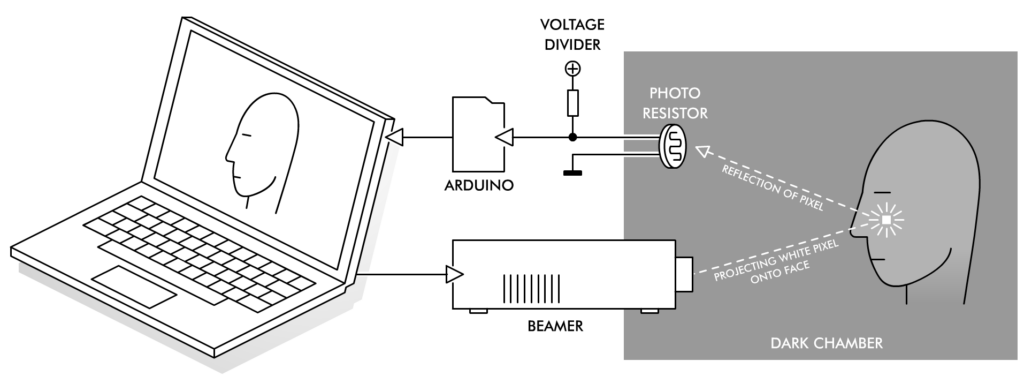Single-sensor selfies with the Flying Pixel Portrait Camera

While most cameras use an array of sensors to quickly capture an image, Niklas Roy presents a different take on things with his Flying Pixel Portrait Camera.
This installation invites participants to place their head under a shroud for nearly a minute and a half, while a computer-controlled projector scans one’s face pixel by pixel. Reflected light levels are recorded with a single light-dependent resistor (LDR) via an Arduino flashed with Firmata, allowing it to interface with the Processing sketch that runs the device without any extra software.

The results are 50×50 black and white photos. It’s also possible to produce color images, which means triple the wait time—and a bit more noise.

The Flying Pixel Portrait Camera uses a video beamer, a single photo resistor, an Arduino and a PC for taking photos of people’s faces. The beamer ‘scans’ the image by projecting a small white square onto a person’s face inside an otherwise completely dark chamber. While the projected square slowly moves over the entire face, the photo resistor captures the reflected luminosities. This generates a proportional analog electric signal which is digitized by an Arduino and transmitted to the PC. As the PC also controls the position of the projected square, it can now construct an image based on the different brightness values that it receives, one pixel at a time.